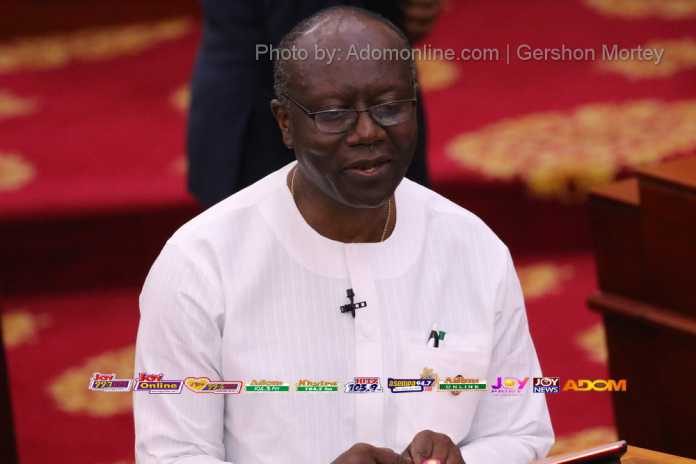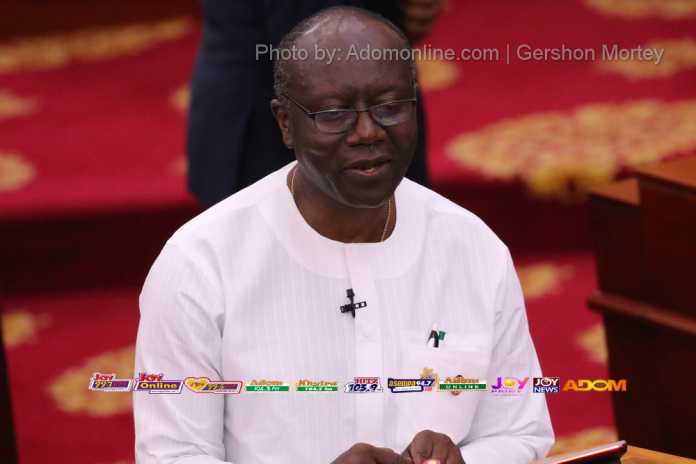
Government ended 2018 with a total debt stock of ¢173.2 billion as captured in Bank of Ghana’s (BoG) Summary of Economic and Financial data released on Friday.
The data showed that from the last time (September 2018) that the Central Bank’s data put the November debt at ¢172.9 billion, the stock of debts has gone up by some ¢300 million to ¢173.2 billion.
Government sources had argued that this might not necessarily be a result of fresh borrowings but rather interest calculations on the borrowing as well as the cedi’s depreciation during that period.
Breakdown of the debt numbers
The country’s external debts stood at $17.9 billion, which were funds that government borrowed from abroad with ¢86 billion secured locally.
Year on Year growth in the Total Debt Stock
As at the end of December 2018 the total debt stock stood at ¢173.2 billion this represents 58 percent of the total value of the economy expressed in percentage terms.
In 2017 it was ¢142.6 billion, representing 55.6 percent of the GDP. In cedi nominal terms, in just a year the debt stock went up ¢30 billion.
In dollar terms, it went up from $32.3 billion in 2017 to $35.9 billion in 2018.
Government had argued that the debt numbers going up does not necessarily mean that it is taken on fresh debts, as exchange rate risk and some debt commitment which indirectly impacted the numbers.
However, the growth in the debt numbers still raises some questions about its debt management policy.
On domestic borrowings, the Bank of Ghana was able to provide the debt numbers as at March ending which stood at ¢92.5 billion. Now compared to the same period in 2017, it was ¢66.8 billion.
2018 borrowings through bonds and Treasury bills
According to the borrowing calendar for 2018, government ended the year taking about ¢45 billion through bonds and treasury bills.
Data from the Finance ministry shows that it has already taken ¢22.4 billion in the first half of this year.
From the first quarter numbers, only ¢4.6 billion can be classified as fresh borrowings which were used to meet the government’s financing needs.
The remaining ¢17.8 billion was used to finance debts that were maturing. Also, ¢11.3 billion was taken in the third quarter of this year.
The calendar which captures government’s operations for October to December shows that the Finance Ministry would be borrowing ¢12.8 billion through bonds and treasury bills for the last quarter of this year.
Developments in the Banking and other sectors of the Economy
The Bank of Ghana data revealed some interesting development, especially in the banking sector.
This is because it showed that deposits and credit extension for the first quarter of the year have indeed picked.
This is coming on the back of the recent challenges that hit the Banking sector, which affected credit growth and deposits. These developments mean that confidence in the banking sector could be picking up.
This is because from the data banking sector deposits have picked in the first three months of this year according to the Economic and Financial Data from Bank of Ghana showed some increases in deposits and credit.
Private sector credit for the first two months of this year went up by 21 percent to reach ¢38 billion ending February 2019.
Now compared to the same period in 2017 the credit to the private sector stood in nominal terms was ¢31.5 billion, while growth was just 2.4 percent.
Total Deposits also jump from ¢60 billion in February 2018 to ¢72 billion ending February 2019.
Financial Soundness indications, in terms of the capital adequacy ratio, have also gone up. However, Non-Performing Loans remains their biggest challenge, with the nominal number reaching ¢6.6 million ending last year.
Cedis depreciation
The Bank of Ghana has put the depreciation of the cedi ending March 2019 at around 5.18 percent, and a quote ¢5.08.
The report also showed that growth in Foreign currency deposits increases significantly by more than 25 percent, in the first two months of this year compared to the same period for 2018.
A recent Central Bank data puts the total foreign currency deposits at around 4 billion dollars ending December 2018.
Total Earnings from Exports
Total earnings from exports ending February 2019 stood at 2.6 billion dollars, compared to 2.9 billion dollars in the same period last year.


